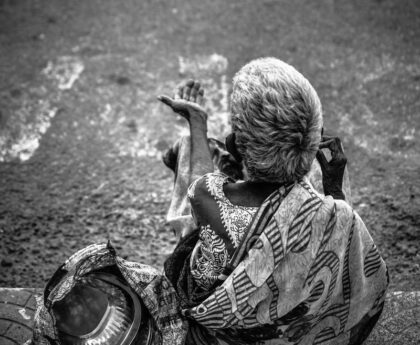The Government’s Cost of Living Payment: Assisting Households Amidst Rising Living Costs
Introduction
Millions of households in the UK are set to receive the next £300 Government Cost of Living payment in the coming weeks. The payment is intended to offer much-needed relief to families experiencing financial strain due to the increasing costs of living. This report aims to provide an overview of the payment scheme, eligibility criteria, and the potential impact it may have on households across the country.
The Cost of Living Payment Scheme
The Cost of Living payment initiative consists of a series of three payments, with each payment amounting to £300. The first payment was disbursed between April and May of this year, benefiting over eight million households. The second payment is scheduled to be paid between October 31 and November 19, with qualifying households receiving the amount directly into their bank accounts. However, the exact dates for the third payment, expected in spring 2024, have yet to be announced by the Government.
Eligibility Criteria
To be eligible for the payment, households must have been claiming certain means-tested benefits between the dates of August 18 and September 17. However, even if individuals later become eligible for these qualifying benefits within this period, they will still be entitled to receive the cost of living payments. The qualifying benefits include Universal Credit, Income-based Jobseeker’s Allowance, Income-related Employment and Support Allowance, Income Support, Working Tax Credit, Child Tax Credit, and Pension Credit.
Automatic Payment Process
The Department for Work and Pensions (DWP) will make most of the cost of living payments to eligible households. However, those who receive Tax Credits will have their payments disbursed by HM Revenue & Customs (HMRC). Tax Credit claimants can expect to receive their payments slightly later, between November 10 and 19.
To identify the payment in their bank accounts, recipients should look for their National Insurance number. The invoice accompanying the payment will include their individual code, along with either an HMRC COLP or DWP COLP notation.
Reporting Missing Payments
If individuals believe they are entitled to a cost of living payment but do not receive it, they can report this issue on the Gov.uk website. However, it is important to note that the reporting process can only begin from November 20 onwards.
Philosophical Discussion: Financial Support and Societal Responsibility
While the Cost of Living payment scheme provides direct financial assistance to struggling households, it is essential to address the broader philosophical questions surrounding this initiative. Should it be the government’s responsibility to intervene and compensate for the rising cost of living? Does this scheme merely serve as a temporary fix, or does it indicate a larger systemic problem of stagnant wages and increasing inequality?
Various perspectives emerge when evaluating the role of government in addressing household finances. Some argue that it is the duty of society to support its most vulnerable members, and government assistance in times of economic uncertainty is a necessary component of a fair and just society. Others contend that reliance on such payments can create dependency and hinder individual motivation to improve personal financial circumstances. Finding the balance between societal responsibility and promoting self-sufficiency remains a challenging task for policymakers.
Editorial: The Scope of Government Assistance
In light of the Cost of Living payment scheme, it is clear that financial assistance plays a crucial role in alleviating the strain faced by many households. However, it is important for policymakers to consider the long-term implications of such initiatives. Rather than relying solely on ad hoc payments, a comprehensive approach to addressing the root causes of rising living costs is necessary.
Investing in initiatives like affordable housing, accessible education and training, and income support for low-income workers can contribute to sustained improvements in household finances. Additionally, policies that promote economic growth and address income inequality should be prioritized to create a fairer and more equitable society.
Advice: Utilizing the Cost of Living Payment
For households expecting to receive the Cost of Living payment, it is recommended to carefully evaluate their financial situation and utilize the payment in the most judicious manner. This one-time payment can provide temporary relief, but it is important to consider long-term financial planning.
Paying off debts, building an emergency fund, or investing in education or vocational training opportunities can help individuals and families build a stronger financial foundation. Seeking professional financial advice can also assist in maximizing the benefits of the payment and planning for future financial stability.
In conclusion, the Cost of Living payment scheme serves as a temporary measure to alleviate some of the financial burdens faced by households amidst rising living costs. However, addressing the systemic issues that contribute to the high cost of living and stagnant wages should be the ultimate goal. The government, society, and individuals must continue to engage in meaningful discussions and take proactive steps to create a more equitable and financially secure future.

<< photo by Felipe Quiroz Bolivar >>
The image is for illustrative purposes only and does not depict the actual situation.
You might want to read !
- DWP’s £300 Cost of Living Payment: A Financial Boost for Millions in Need
- Exploring the Eligibility and Impact of the £150 Warm Home Discount Cost of Living Support
- DWP Warns Millions of Cost of Living Payment Increase: Implications and Outlook
- Charity Warns £150 Cost of Living Payment “Won’t Make a Dent” for …
- Innocent Until Proven Guilty: Unwavering Support from Young Person’s Family Amid BBC Presenter Row
- Michael J. Fox Honored with Lifetime Achievement Award, Helped by Supportive Family




